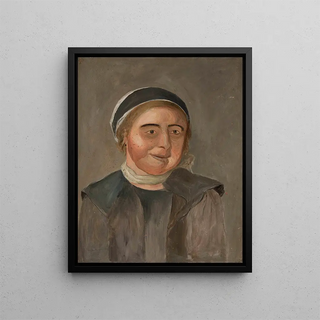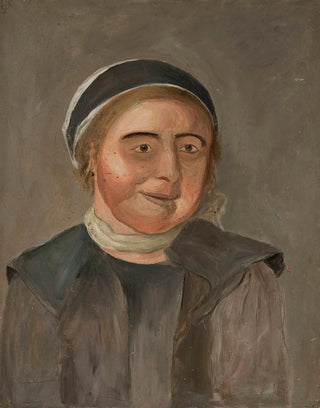Art print | Study of a woman wearing a black and white cap - Tadeusz Makowski


View from behind

Frame (optional)
Reproduction of "Study of a Woman Wearing a Black and White Cap" by Tadeusz Makowski is an invitation to immerse yourself in the delicate and nuanced universe of the Polish artist. This piece, both simple and complex, captures the essence of a bygone era while revealing a poignant intimacy. The depicted woman, both anonymous and universal, becomes a symbol of emerging modernity, where everyday life blends with art. Through this study, Makowski succeeds in transcending the banality of the subject to create a work that is both contemplative and evocative, reflecting the artistic sensitivity of the early 20th century.
Style and uniqueness of the work
Tadeusz Makowski's style is characterized by a subtle and delicate approach, oscillating between realism and impressionism. In this piece, the chosen colors, with their soft and harmonious palette, create a soothing atmosphere. The black and white cap, the centerpiece of the composition, draws the eye and emphasizes the discreet elegance of the female figure. The facial features, though simplified, express profound humanity, inviting the viewer to ponder the thoughts and emotions of the depicted woman. The use of light and shadow, as well as the texture of the surfaces, demonstrate technical mastery that gives the work rare emotional depth. Every detail, every brushstroke, seems charged with meaning, revealing Makowski's ability to capture the moment with poetic intensity.
The artist and his influence
Tadeusz Makowski, born in Poland and active within the European artistic context of the early 20th century, established himself as an emblematic figure of his time. Influenced by the artistic movements of his era, notably Fauvism and Cubism, he nonetheless developed a personal style that is uniquely his own. His work stands out for a particular sensitivity to themes of daily life, often tinged with melancholy and reflection. Makowski also played a key role in promoting Polish art in Europe, building bridges between cultures and styles.

Matte finish

View from behind

Frame (optional)
Reproduction of "Study of a Woman Wearing a Black and White Cap" by Tadeusz Makowski is an invitation to immerse yourself in the delicate and nuanced universe of the Polish artist. This piece, both simple and complex, captures the essence of a bygone era while revealing a poignant intimacy. The depicted woman, both anonymous and universal, becomes a symbol of emerging modernity, where everyday life blends with art. Through this study, Makowski succeeds in transcending the banality of the subject to create a work that is both contemplative and evocative, reflecting the artistic sensitivity of the early 20th century.
Style and uniqueness of the work
Tadeusz Makowski's style is characterized by a subtle and delicate approach, oscillating between realism and impressionism. In this piece, the chosen colors, with their soft and harmonious palette, create a soothing atmosphere. The black and white cap, the centerpiece of the composition, draws the eye and emphasizes the discreet elegance of the female figure. The facial features, though simplified, express profound humanity, inviting the viewer to ponder the thoughts and emotions of the depicted woman. The use of light and shadow, as well as the texture of the surfaces, demonstrate technical mastery that gives the work rare emotional depth. Every detail, every brushstroke, seems charged with meaning, revealing Makowski's ability to capture the moment with poetic intensity.
The artist and his influence
Tadeusz Makowski, born in Poland and active within the European artistic context of the early 20th century, established himself as an emblematic figure of his time. Influenced by the artistic movements of his era, notably Fauvism and Cubism, he nonetheless developed a personal style that is uniquely his own. His work stands out for a particular sensitivity to themes of daily life, often tinged with melancholy and reflection. Makowski also played a key role in promoting Polish art in Europe, building bridges between cultures and styles.






